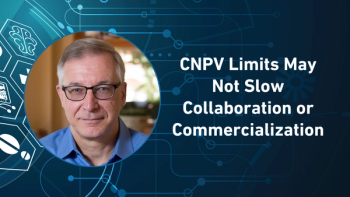
The Unsung Allies Helping Patients Navigate Specialty Drug Access
In the third part of her Pharma Commerce video interview, Megan Wetzel, VP, product, access & affordability at CoverMyMeds, explains that by educating provider offices on payer requirements, prior authorizations, and denial trends, field reimbursement managers help streamline complex reimbursement processes and reduce treatment delays.
According to Megan Wetzel, VP, product, access & affordability, CoverMyMeds, specialty drugs continue to account for a disproportionate share of US drug spending despite representing only a small percentage of prescriptions. Several key factors contribute to this imbalance, and chief among them are the complexity, cost, and specificity of specialty therapies.
Unlike traditional retail drugs, specialty medications are designed to treat serious, chronic, or rare conditions and often require specialized handling, monitoring, and administration. Many must be administered in clinical settings such as hospitals or physicians’ offices rather than through retail pharmacies. These requirements add layers of logistical and operational costs throughout the treatment process.
In 2024, specialty drugs represented 93% of all new US drug launches, reflecting the industry’s increasing focus on advanced, targeted therapies. This surge has been driven by massive R&D investment, with biopharma research spending exceeding $100 billion last year—a 44% increase over 2023. Much of this funding has been channeled into developing complex, high-value specialty treatments.
However, these therapies are inherently expensive to produce and often serve smaller patient populations, driving up per-patient costs. The personalized nature of these drugs, longer development timelines, and limited market competition further compound pricing challenges.
Adding to the pressure, demographic trends such as the rise in chronic disease and an aging population continue to increase demand for these medications. The U.S. population aged 65 and older is projected to reach 63 million this year, a 9% jump since 2022, and climb to 82 million by 2050.
Ultimately, Wetzel noted, the imbalance stems from the intricate science, individualized care, and high economic stakes behind specialty medicines, factors that will only grow more prominent as healthcare becomes increasingly specialized and patient-centric. She also dives into the role of field reimbursement managers in helping patients access specialty medications; considerations that should guide insourcing, outsourcing, or adopting a hybrid model for field reimbursement support; and much more
A transcript of her conversation with PC can be found below.
PC: Field reimbursement managers often work behind the scenes. Can you describe what their day-to-day role looks like in helping patients access specialty medications?
Wetzel: Field reimbursement managers (we call them FRMs), to your point, they really play an important role in this kind of supporting the providers’ offices. Their day-to-day is really focused on education. They educate the care team, so they go into these provider offices and really educate them on how to navigate some of these complex payer requirements, how to think through the prior auth requirements and the processes that go along with that and those specialty meds, specifically along claim denials, how to overcome some of those denials.
They're really trying to help the offices understand what's needed and then how to approach it differently and more efficiently in the future. They also use tools like FieldConnect, so that's kind of a real-time data source that they can bring into that conversation. It allows them to have conversations around coverage insights, so they can be a little bit more proactive about here's what the coverage may look like.
It also talks about denial trends, so they can educate the providers around, here's some of the trends we're seeing in denials in this specific space. The idea is that the offices are making much more informed decisions. It's kind of a mix a little bit of their technical know-how, and then just more of the strategic guidance that they can share with some of these care teams and the provider offices.
They're trying to make sure that they've got the information and the resources they need to kind of get patients through these barriers more effectively, but especially in specialty medications, because we know that these journeys are much more complex. We're seeing that these FRM teams are much more helpful and supportive when thinking about these complex patient journeys.
Newsletter
Stay ahead in the life sciences industry with Pharmaceutical Commerce, the latest news, trends, and strategies in drug distribution, commercialization, and market access.





